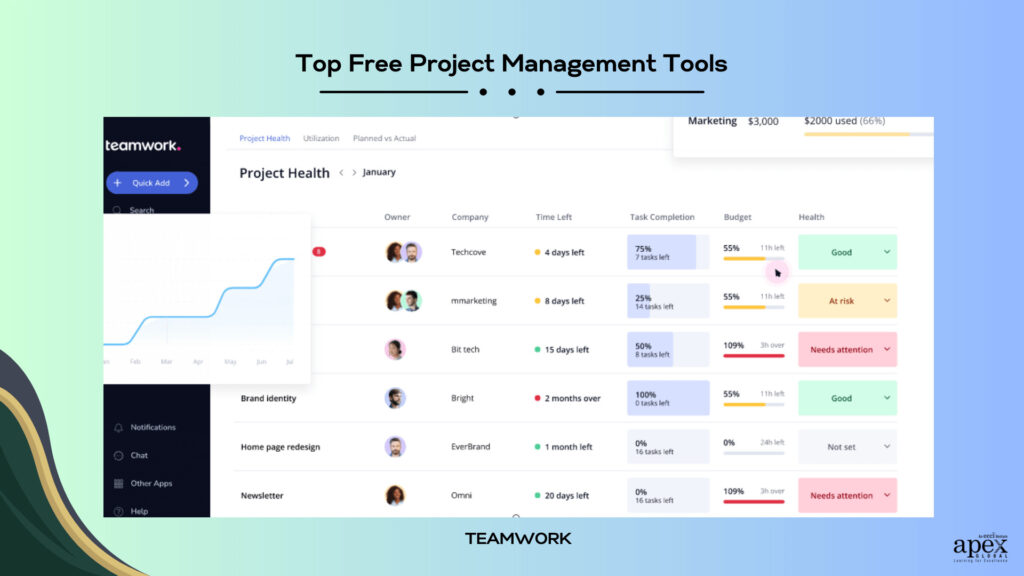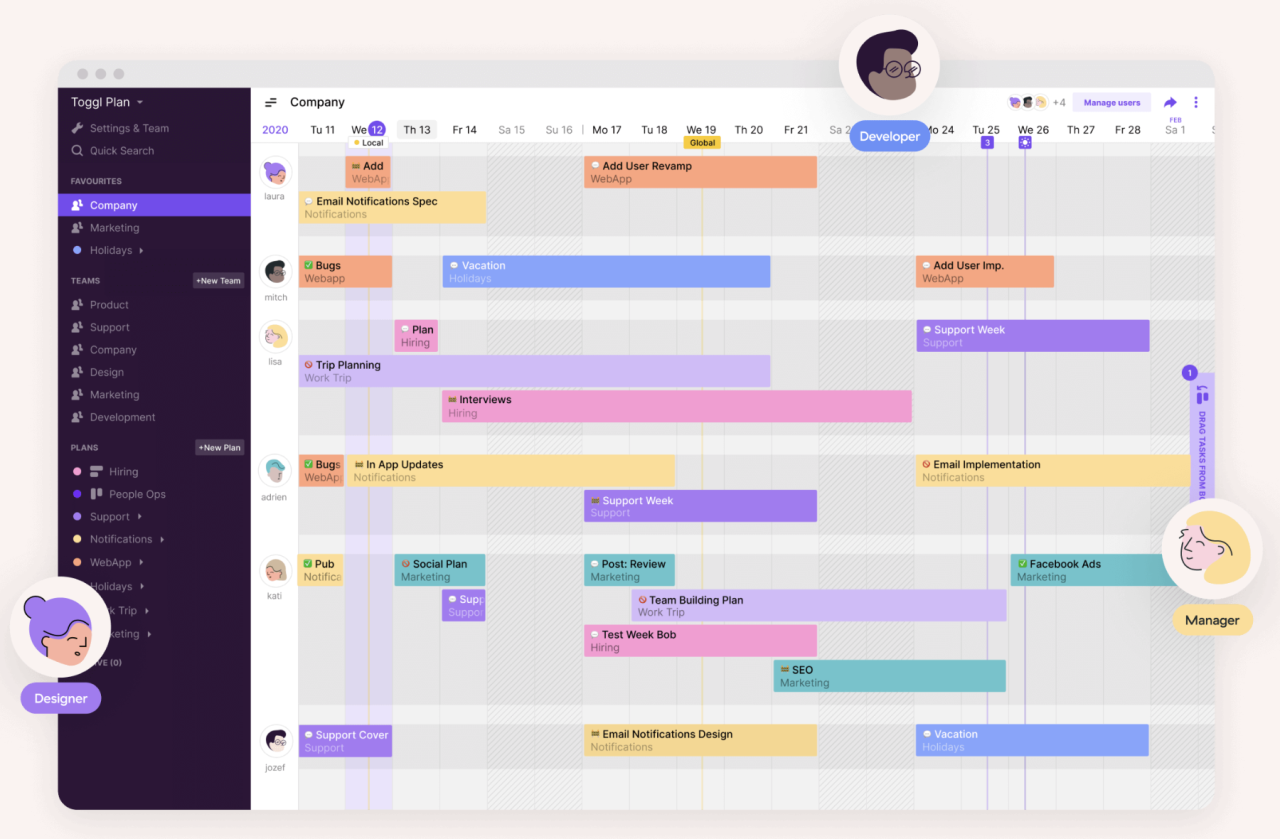Top 7 Free Project Management Tools Tested
Project management can feel like herding cats – chaotic, unpredictable, and sometimes downright frustrating. But it doesn’t have to be. The right tools can transform your workflow, bringing order to the chaos and boosting your team’s productivity. This is especially true when you’re working with a limited budget. Luckily, several excellent free project management tools exist, offering robust features without breaking the bank. We’ve tested seven of the best, and we’re ready to share our findings. Choosing the right project management software is crucial for success. This guide will help you navigate the options and find the perfect fit for your needs.
Finding the ideal free project management tool can seem daunting. The market is flooded with options, each promising the moon and stars. However, not all free tools are created equal. Some lack essential features, while others are riddled with limitations. This review cuts through the noise, focusing on genuinely effective and user-friendly solutions. We’ve put each tool through its paces, evaluating its ease of use, functionality, and overall effectiveness.
Many project managers struggle with efficiently tracking progress and ensuring deadlines are met. This often leads to missed deadlines and frustrated team members. However, a well-chosen project management tool can alleviate these issues dramatically. By providing a central hub for communication, task assignments, and progress tracking, these tools streamline workflows and improve overall team collaboration.

The free tools we’ve selected offer a great balance between functionality and cost. They’re perfect for small teams, freelancers, or anyone just starting out with project management. While some may lack the advanced features of paid counterparts, they still offer enough to significantly improve your workflow and productivity. Remember, the best tool is the one that best fits your specific needs and project requirements.
Our testing process involved evaluating each tool based on key criteria including ease of use, task management capabilities, collaboration features, reporting options, and overall user experience. We considered both the initial setup and the ongoing use of each tool, ensuring a comprehensive assessment of its strengths and weaknesses. Ultimately, our goal is to help you make an informed decision and select the tool that will best support your project success.
This review focuses on genuinely free options, avoiding those with restrictive free plans or hidden costs. We believe everyone deserves access to effective project management tools, regardless of budget. So, let’s dive into our top seven picks and discover which one might be perfect for you! We’ve carefully selected these tools based on their popularity, user reviews, and our own rigorous testing.
This in-depth look at seven free project management tools will equip you with the knowledge to make an informed choice. Whether you’re a seasoned project manager or just starting out, we’ve got you covered. Let’s get started!
1. Task Management & Collaboration: Asana
Asana is a popular choice for its intuitive interface and robust task management features. You can easily create projects, assign tasks, set deadlines, and track progress. Asana’s collaboration tools are also excellent, allowing team members to communicate effectively and stay updated on project developments. The free plan offers ample functionality for smaller teams.
Asana excels in its ability to visualize project progress. Using Kanban boards or list views, you gain a clear understanding of where each task stands. This visual representation makes it easy to identify bottlenecks and address potential issues proactively. The platform’s simplicity makes it accessible even for those new to project management.
Asana’s integration capabilities further enhance its usefulness. It connects with various other tools, expanding its functionality and streamlining workflows. The mobile app allows you to stay connected to your projects on the go, ensuring you always have access to the latest updates.
While the free plan is generous, it does have limitations. Larger teams or those needing more advanced features might eventually need to upgrade to a paid plan. However, for many small teams and individual users, the free version is more than sufficient.
The intuitive interface and ease of use make Asana a great option for beginners. Even without prior experience with project management software, you’ll find Asana easy to navigate and use effectively.
2. Simple & Effective: Trello
Trello utilizes a Kanban-style board system, making it visually appealing and easy to understand. Tasks are represented as cards, which you can move across different stages of a project (e.g., To Do, In Progress, Done). This visual workflow enhances organization and provides a clear overview of project progress.

Trello’s simplicity is a major advantage. The learning curve is minimal, allowing users to quickly become proficient. This makes it a perfect option for those who want a straightforward and uncomplicated project management tool. The interface is clean and uncluttered, focusing on core functionality.
Collaboration is seamless in Trello. Team members can comment on cards, assign tasks, and share files, fostering effective communication and teamwork. The platform’s flexibility allows it to adapt to various project types and workflows.
Trello’s free plan offers a good balance of features and limitations. While it might not be as feature-rich as some other tools, it’s more than sufficient for many users. Larger teams or those requiring advanced features might need to consider a paid subscription.
Trello’s visual appeal and ease of use are its greatest strengths. The Kanban board system provides a clear and intuitive way to manage tasks and track progress, making it a highly accessible tool for users of all skill levels.
3. Robust Features: Jira (for Software Development)
Jira is a powerful tool, particularly well-suited for software development teams. It excels in managing complex projects, tracking bugs, and facilitating agile development methodologies. While it might seem overwhelming at first, its features are designed for efficiency and scalability.
Jira offers a range of functionalities, including sprint planning, issue tracking, and custom workflows. Its ability to manage complex projects makes it a valuable asset for larger teams working on intricate software development projects. The platform’s flexibility allows for customization to fit specific team needs.
Jira’s reporting capabilities provide valuable insights into project progress, allowing teams to identify bottlenecks and optimize workflows. This data-driven approach helps teams improve efficiency and meet deadlines more effectively. The platform’s extensive integration capabilities further enhance its functionality.
While Jira’s free plan is limited, it provides a taste of its capabilities. Larger teams or those requiring more advanced features will need to consider a paid plan. The learning curve can be steeper compared to other tools on this list.
Despite its complexity, Jira’s power and flexibility make it a worthwhile investment for software development teams. The potential for increased efficiency and improved project management justifies the time spent learning the platform.
4. Simple Task Management: Todoist
Todoist is a minimalist task management tool that focuses on simplicity and efficiency. It’s perfect for individuals and small teams needing a straightforward way to organize and manage tasks. Its clean interface and intuitive features make it a breeze to use.
Todoist’s strength lies in its simplicity. It avoids unnecessary complexity, allowing users to focus on what matters most – getting things done. The platform’s straightforward approach makes it accessible to users of all technical skill levels.
The tool allows for task prioritization, collaboration, and project organization. You can assign due dates, set reminders, and share tasks with others. Its cross-platform availability ensures you can access your tasks from anywhere.
Todoist’s free plan is quite generous, offering a good number of features for personal or small team use. However, for larger teams or those needing advanced features, a paid plan might be necessary.
Todoist’s focus on simplicity makes it an excellent choice for those who prefer a clean and uncluttered interface. Its ease of use and efficient task management capabilities make it a highly effective tool for productivity.
5. Versatile Project Management: ClickUp
ClickUp is a highly versatile project management tool that offers a wide range of features, from simple task management to complex project planning. It’s suitable for individuals, small teams, and larger organizations. Its flexibility makes it adaptable to various workflows and project types.
ClickUp’s customizable views (list, board, calendar, etc.) allow you to tailor the interface to your specific preferences and project needs. This flexibility makes it highly adaptable to different project management methodologies and team preferences. Its powerful features include task management, time tracking, and reporting.
ClickUp’s collaboration features facilitate effective teamwork. Team members can easily communicate, share files, and collaborate on tasks. The platform’s extensive integration capabilities further enhance its functionality and streamline workflows.
While ClickUp’s free plan offers a good amount of features, it does have limitations. Larger teams or those requiring more advanced functionalities might need to upgrade to a paid plan. The sheer number of features can be overwhelming for new users.
Despite its complexity, ClickUp’s versatility and extensive features make it a powerful tool for managing a wide range of projects. Its adaptability to various workflows and project types makes it a valuable asset for teams of all sizes.
6. Focus on Teamwork: Monday.com
Monday.com is a visual project management tool that emphasizes collaboration and teamwork. Its intuitive interface and visually appealing design make it easy to track progress and communicate with team members. It’s well-suited for teams needing a highly collaborative environment.
Monday.com’s strength lies in its ability to foster effective teamwork. Its visual dashboards provide a clear overview of project progress, allowing team members to stay informed and aligned. The platform’s intuitive interface makes it easy for everyone to use, regardless of their technical skills.
The tool provides features like task assignment, progress tracking, and real-time communication. Its flexibility allows it to adapt to different project management methodologies and team preferences. The platform’s mobile app allows for convenient access on the go.
Monday.com’s free plan is limited in the number of users and features. Larger teams or those needing more advanced features will need to upgrade to a paid plan. While intuitive, some users might find the interface slightly overwhelming initially.
Despite its limitations, Monday.com’s focus on collaboration and its visually appealing interface make it a strong contender for teams needing a highly interactive project management solution.
7. Simple Gantt Chart Tool: ProjectLibre
ProjectLibre is a free, open-source project management tool that focuses on Gantt charts. If you’re familiar with Gantt charts and appreciate their visual representation of project timelines, ProjectLibre is a strong contender. It’s particularly useful for visualizing project dependencies and critical paths.
ProjectLibre’s strength lies in its robust Gantt chart functionality. It allows for detailed project planning, including task dependencies, milestones, and resource allocation. The visual representation of project timelines makes it easy to identify potential delays and adjust schedules accordingly.
The tool also offers other features like task management, resource allocation, and reporting. While not as feature-rich as some other tools on this list, its Gantt chart capabilities are a significant advantage. The open-source nature of the tool ensures ongoing community support and development.
ProjectLibre’s free plan is fully featured, offering all the functionalities of the tool without any limitations. However, the interface might feel somewhat dated compared to newer, more modern project management tools.
For those who prioritize Gantt charts and appreciate a fully free and open-source solution, ProjectLibre is a solid choice. Its simplicity and focus on project visualization make it a valuable tool for managing projects with clear timelines and dependencies.
In conclusion, the best free project management tool for you depends on your specific needs and project requirements. Consider the size of your team, the complexity of your projects, and your preferred project management methodology when making your decision. Each of the tools listed above offers unique advantages, and exploring their free plans is the best way to determine which one fits your workflow.
Ready to streamline your project management? Share this article with your team and let them know which tool you’ve chosen! Like and comment below to share your experiences and recommendations. Learn more about software testing at softwaretesting.biz.id.

